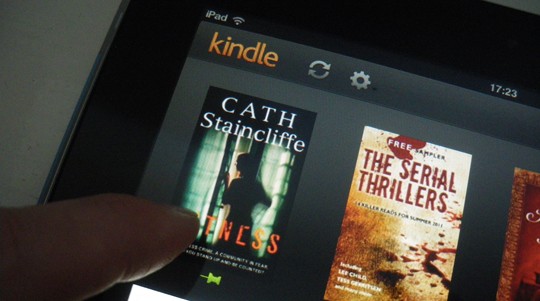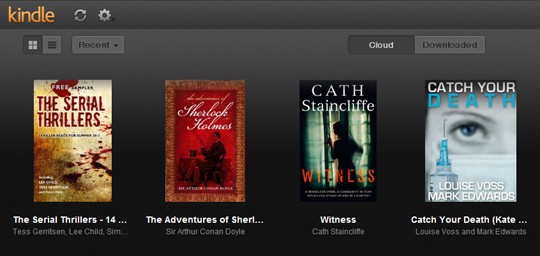
![]() As we reported during the week, Amazon has released a new app called the Kindle Cloud Reader, which works across a range of devices. It brings you Kindle on the iPad, or an Android tablet. It works on Macs and PCs with Chrome or Safari web browsers. And it works on iPhones and Android smartphones. But why do we need the Cloud Reader for our crime fiction novels when there were already Kindle apps for all these platforms?
As we reported during the week, Amazon has released a new app called the Kindle Cloud Reader, which works across a range of devices. It brings you Kindle on the iPad, or an Android tablet. It works on Macs and PCs with Chrome or Safari web browsers. And it works on iPhones and Android smartphones. But why do we need the Cloud Reader for our crime fiction novels when there were already Kindle apps for all these platforms?
Well, Apple’s iProfit philosophy prohibits companies from selling content within their apps unless Apple gets a 30 per cent cut. Amazon didn’t want to pay the tariff so they updated the existing iPad and iPhone Kindle apps removing the eBooks store. The new Kindle Cloud Reader, however, has a button that opens the Amazon site in a browser on your device, cunningly sidestepping Apple’s in-app selling rules.
 As the name suggests, it also brings with it the notion of cloud technology. When you buy a digital book it gets stored in ‘the cloud’ and wherever you’ve installed the Cloud Reader app, you can read your book. You could begin the new Lawrence Block novel using your smartphone on the train to work, carry on with your laptop at lunchtime, and continue in the evening on an iPad, or on a good old Kindle. As long as you’re online, the cloud will remember where you got to, and store your bookmarks and notes. You can set the paper colour to white, sepia or black (with white text), and alter the size of the type.
As the name suggests, it also brings with it the notion of cloud technology. When you buy a digital book it gets stored in ‘the cloud’ and wherever you’ve installed the Cloud Reader app, you can read your book. You could begin the new Lawrence Block novel using your smartphone on the train to work, carry on with your laptop at lunchtime, and continue in the evening on an iPad, or on a good old Kindle. As long as you’re online, the cloud will remember where you got to, and store your bookmarks and notes. You can set the paper colour to white, sepia or black (with white text), and alter the size of the type.
That all sounds very clever. The trouble is, it’s nothing the original Kindle apps on various platforms didn’t do already. If you have the old app on your iPad and on your PC, for instance, if you buy a book on one device you can read it on the other and your bookmarks are preserved just like with the Cloud Reader.
Maybe you’re wondering if Amazon has made reading with the Kindle Cloud Reader a more heavenly experience? A new app with new features, perhaps? Nope. On the iPad the page turning action is actually slightly less rewarding than it was on the old Kindle app. (Note: Apple’s iBooks app is even better in terms of user experience, but you can’t use it for Kindle eBooks.) So, the Kindle Cloud Reader is not quite as nice to use and the only tangible difference is that there’s a button opening the Kindle Store in a web browser. Upon closer inspection the key benefits of the Kindle Cloud Reader are, as its name suggests, little more than vapour.
Kindle Cloud Reader is free and can be found here.









Finally, someone explained this to me. I was wondering what the hell that thing was.